|
|
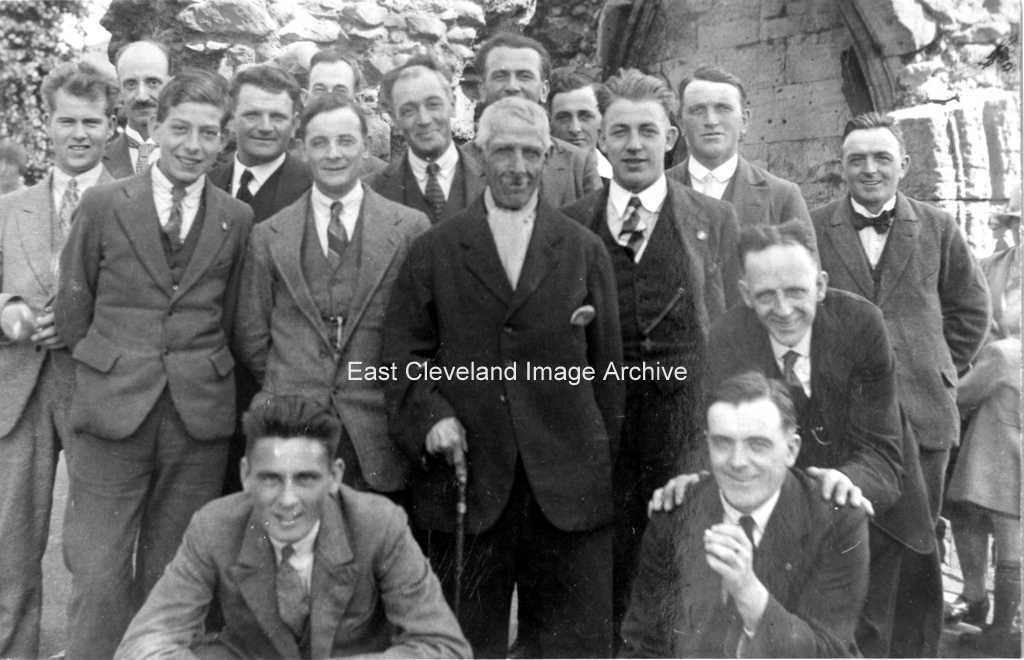
The Archive hasn’t a clue who these men were, or where they were – at a guess it might have something to do with the distinguished-looking gentleman with the cane in the middle of the group. Can anybody help us out?
Wayne Raspison tells us: “The gentleman in the middle is Thomas Vincent Raspison my great grandfather. I was led to believe the picture was taken on a church outing but I don’t know where. I think it would have been around the late 1920’s as he died in 1930. Originally from Gravesend in Kent he came to the area in the early 1870’s to find work originally in a printers shop and then as an ironstone miner. He lived in High Row for most of that time and married a local girl Elizabeth Thomas. I have this obituary from a newspaper cutting.
‘Obituary Death of Mr. Thomas Vincent Raspison: On Wednesday, last week, the death took place of one of the most familiar and best known personalities of Loftus, in the person of Mr. Thomas Vincent Raspison. The deceased was a widower, his wife having pre-deceased him about 16 years ago, and had attained the ripe age of seventy-nine years. For some time he had been in failing health, and his death followed upon a seizure. On his retirement as an ironstone miner Mr. Raspison assisted Mr. W. J. Robinson, auctioneer, and had a very jocular manner in carrying out his duties, and his genial presence will be greatly missed. The deceased was a keen lover of sport, and was one of the pioneers of the Loftus Athletic Sports Club and a member of the Committee. For about forty years Mr. Raspison officiated as the town bellman, and for thirty-five years he was organ blower at St. Leonard’s Parish Church, and recently, as a mark of appreciation of his faithful services, the choir and members of the congregation presented him with a handsome testimonial, which he highly appreciated. The funeral took place on Saturday afternoon at the Loftus Cemetery, there being a large and representative gathering. The first portion of the burial service took place at St. Leonard’s Parish Church, which was conducted by the Rev. C. Ramsden (Rector) and Captain Halls (Church Mission). Two of the deceased’s favourite hymns were impressively sung “Lead, kindly light,” and “O God, our help in ages past,” and on the procession leaving the church the “Dead March” (in Saul) was played by Mr. C. Trevillion, the organist. The coffin bore several beautiful wreaths and floral tokens of esteem, including one from each of his four sons.”
Many thanks to Wayne Raspison for that update.
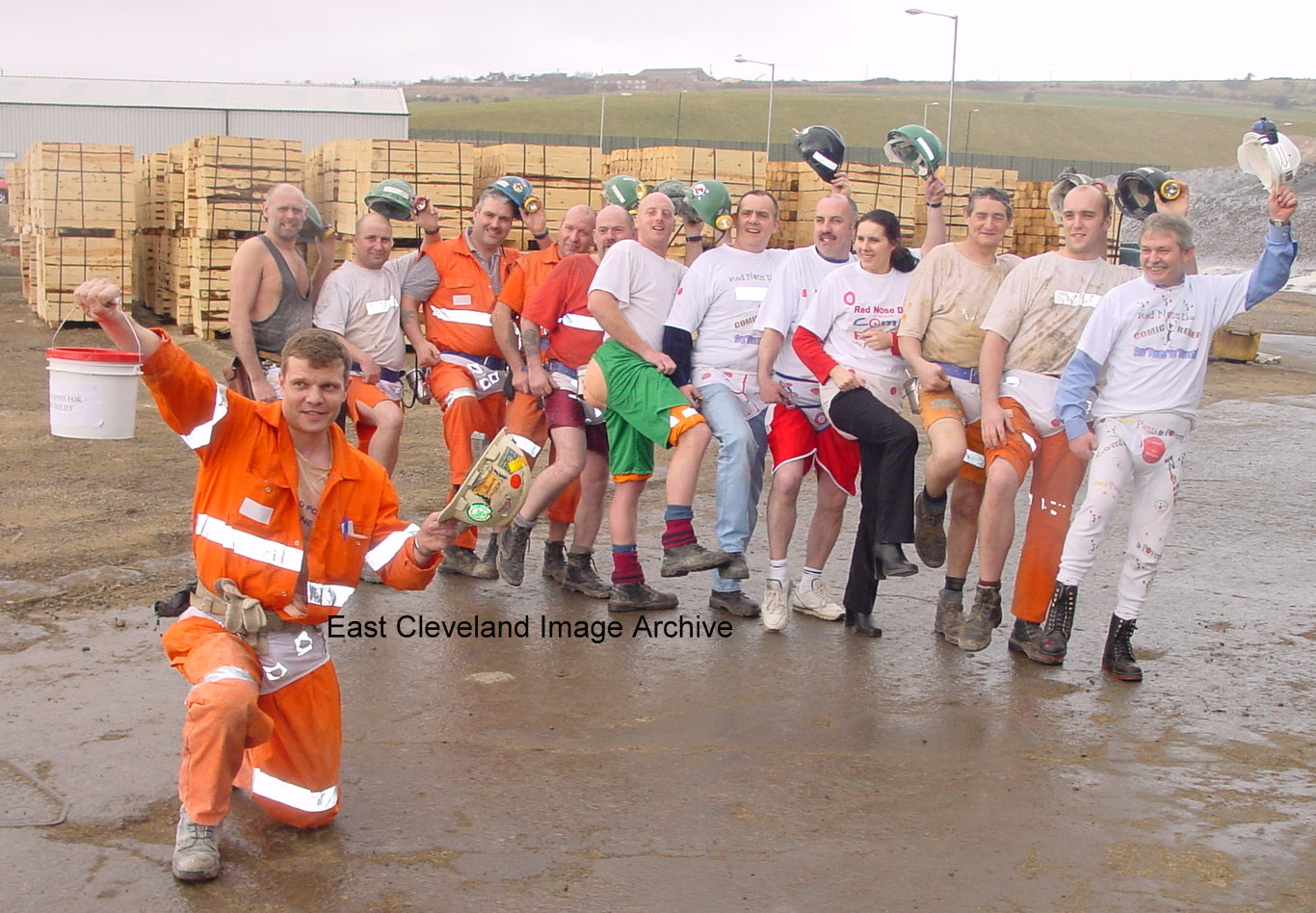
We couldn’t resist this image – you’ve gotta hand it to these guys and girl – wearing your underpants on the outside of your trousers is way cool! Employees of Cleveland Potash doing their bit for Comic Relief!
Image courtesy of Alan M Franks.
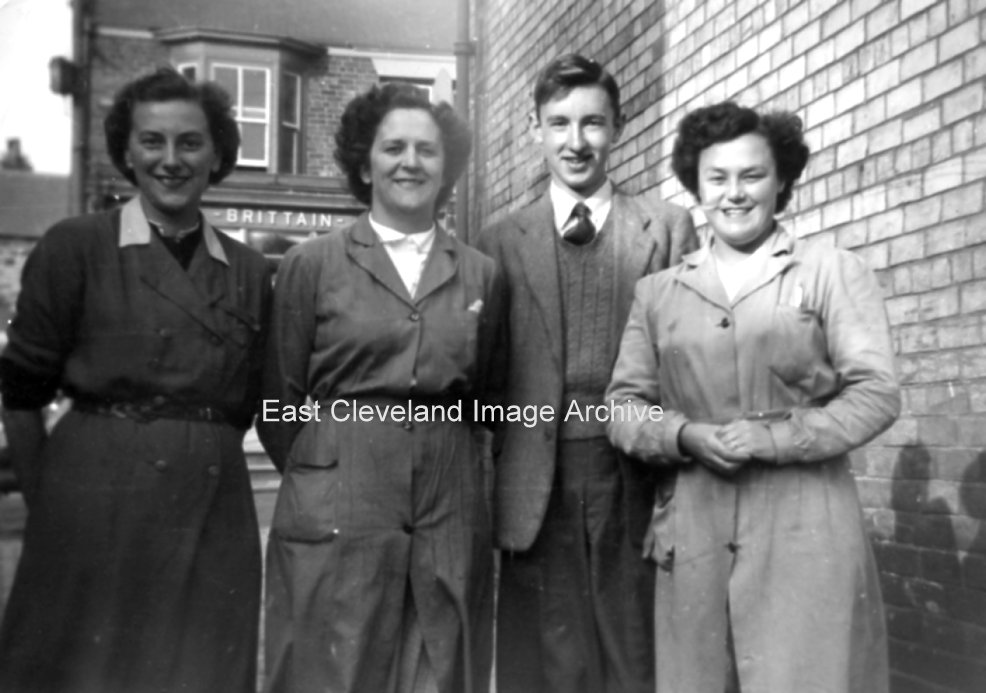
Mary Coverdale, Eve Tebble, Philip Beadnall, and Betty Gorman are pictured in the side street between Dodd’s shop and the main building of the Co-operative in this photograph; taken in 195?
Image and names courtesy of Betty Gorman.
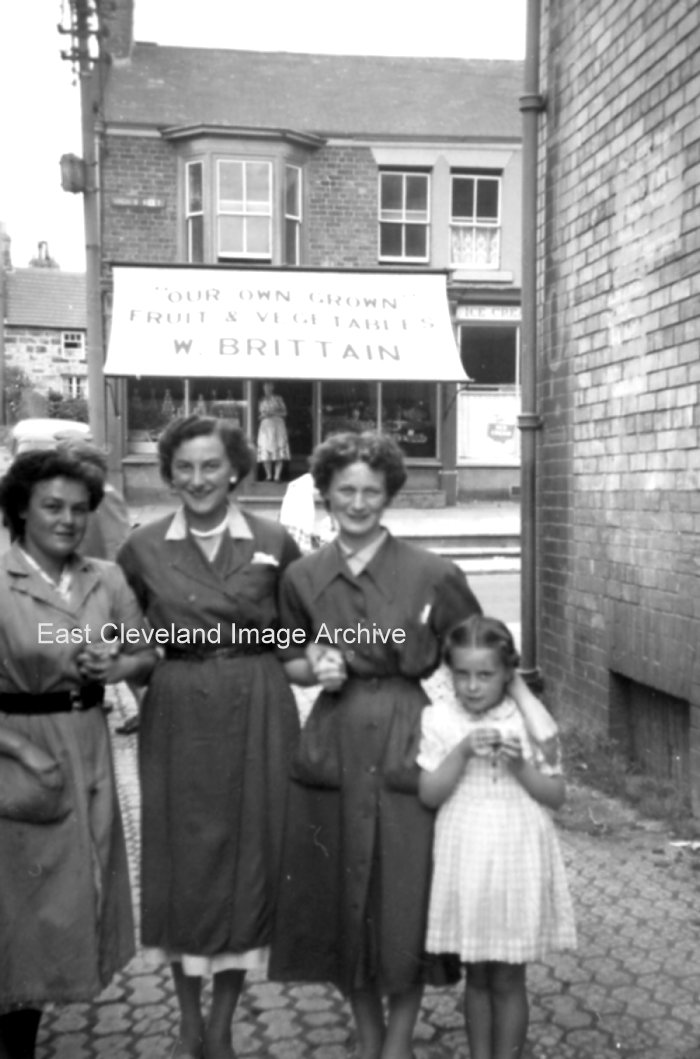
Betty Gorman, Mary Coverdale and Betty Ditchburn were joined by Jane Lindsley in this photo taken beside Dodd’s shop. The awning is out on Brittain’s shop over the road; with Mrs. Brittain in the doorway. The premises are presently occupied by Thompsons Funeral Services and prior to that was Trillos Ice-cream Parlour and Cafe.
Image and names courtesy of Betty Gorman.
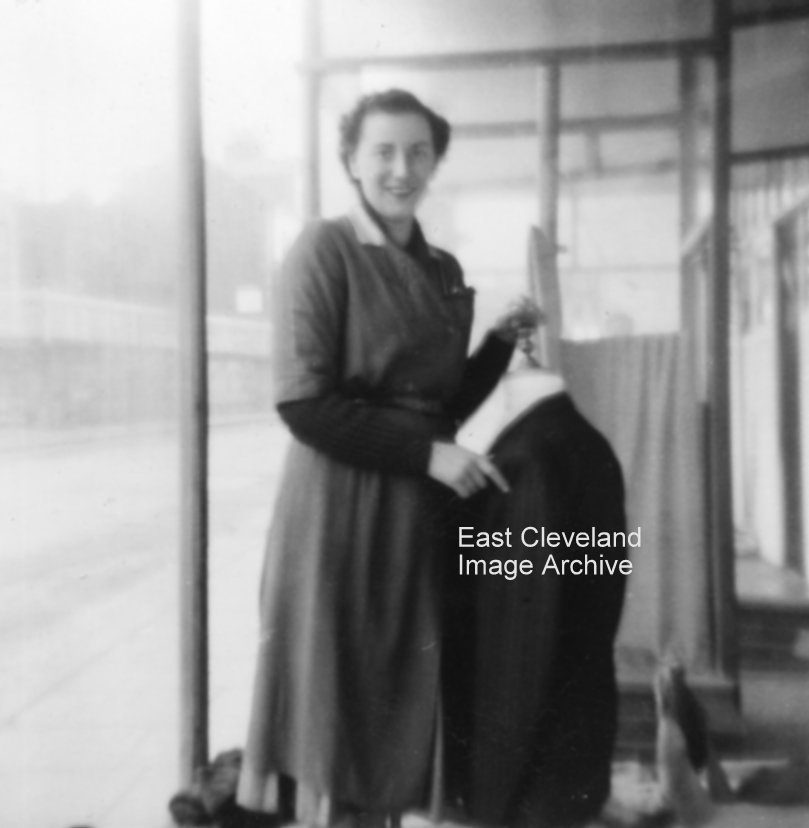
This image is from a selection of photographs that were taken when Mrs Betty Gorman was an assistant in C. J. Dodd’s shop on Zetland Road. In this image Mary Coverdale is arranging the window display.
Image courtesy of Betty Gorman.
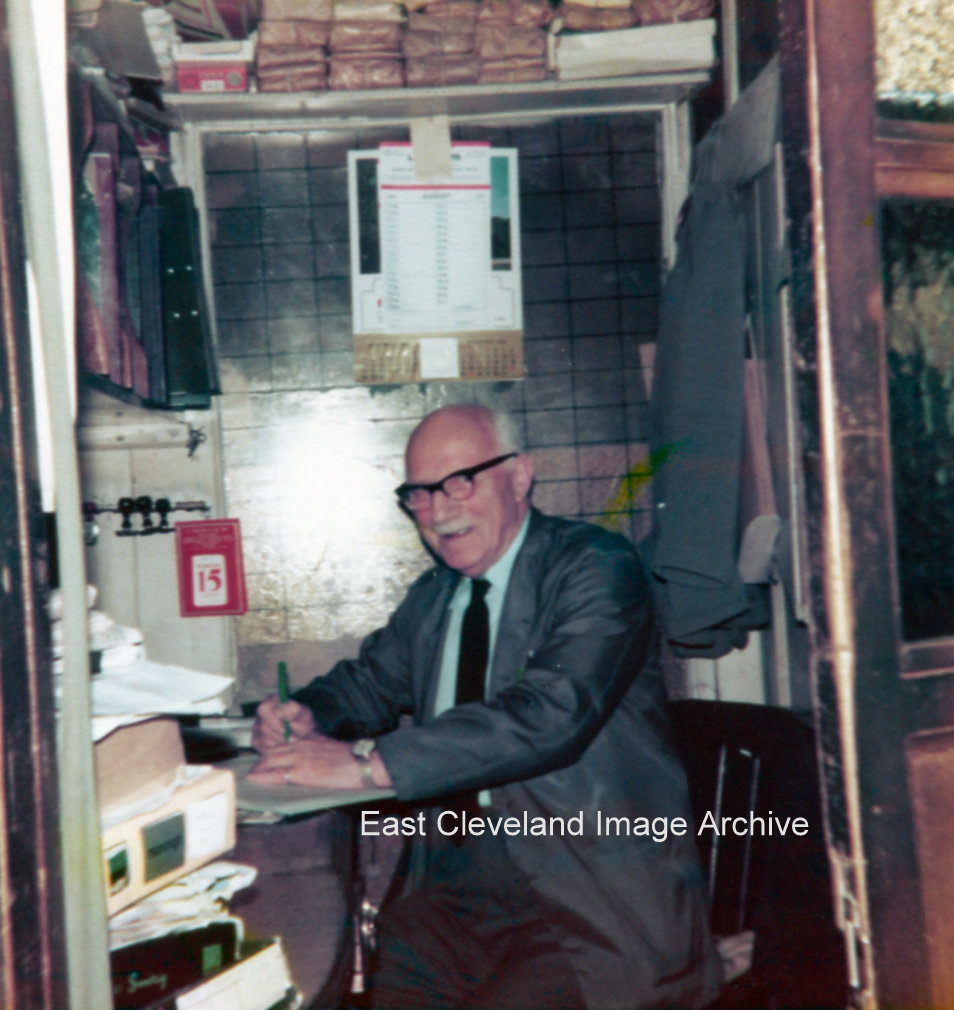
Mr. Dodd sitting at his desk in the kiosk where the cash was handled in this photo, taken in August 1979.
Image courtesy of Mrs. Ditchburn.
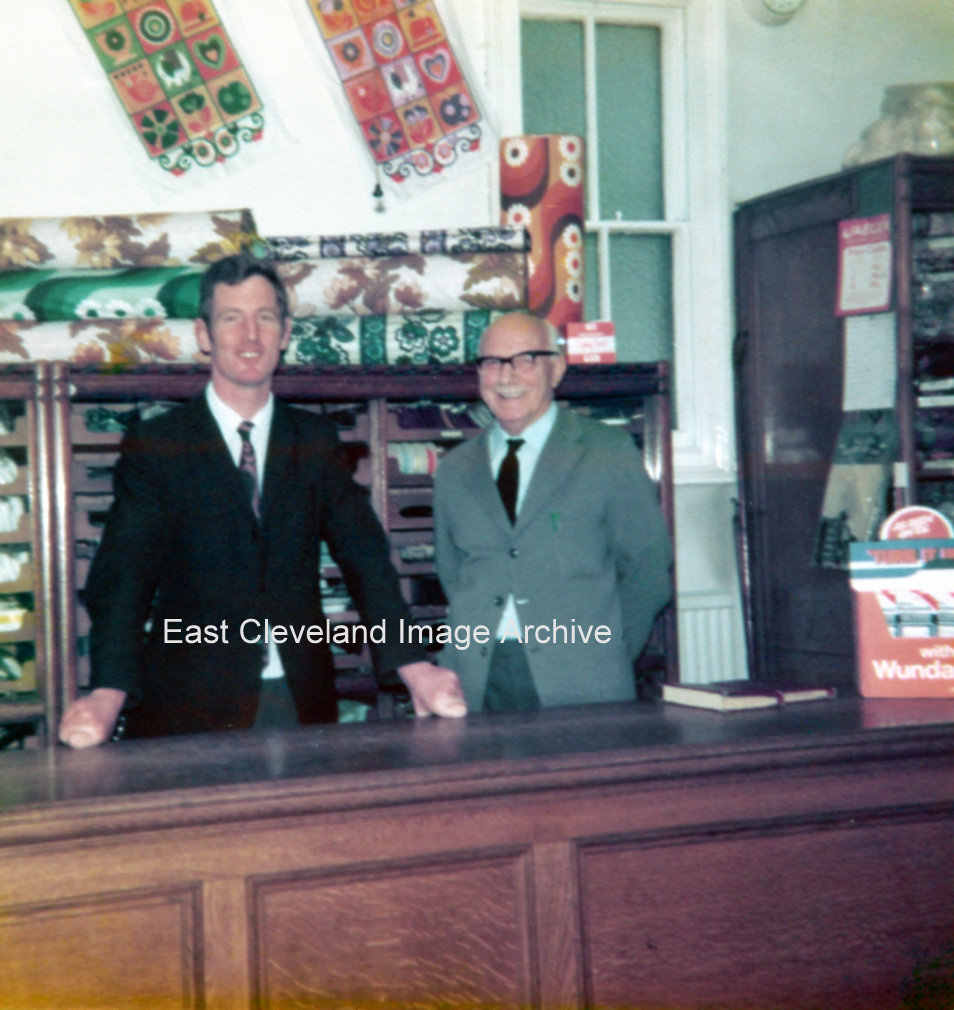
John Dodd beside his father, behind the counter in their shop. Christopher Colbeck tells us: ” My mother, Dorothy HEBRON born 1915 in Loftus at Pear Tree House in the Market Place, told me a tale she remembered of her own mother Sarah HEBRON visiting the Dodds shop where they had just had installed; on the end of the shop counter, a device which held a large roll of brown paper for wrapping sold goods. Having bought and paid for some goods which were duly wrapped. She then noticed that the paper displayed the name of the shop. Dodds were very proud of the paper roll device but her mother in some fairly haughty manner told the staff that she was not going to walk through Loftus advertising Dodds name and made the staff unwrap the goods and reverse the paper and re-wrap before she would take her purchase out of the shop. Imagine trying that at Sainsburys today?”
Image courtesy of Mrs. Ditchburn and many thanks to Christopher Colbeck for that update.
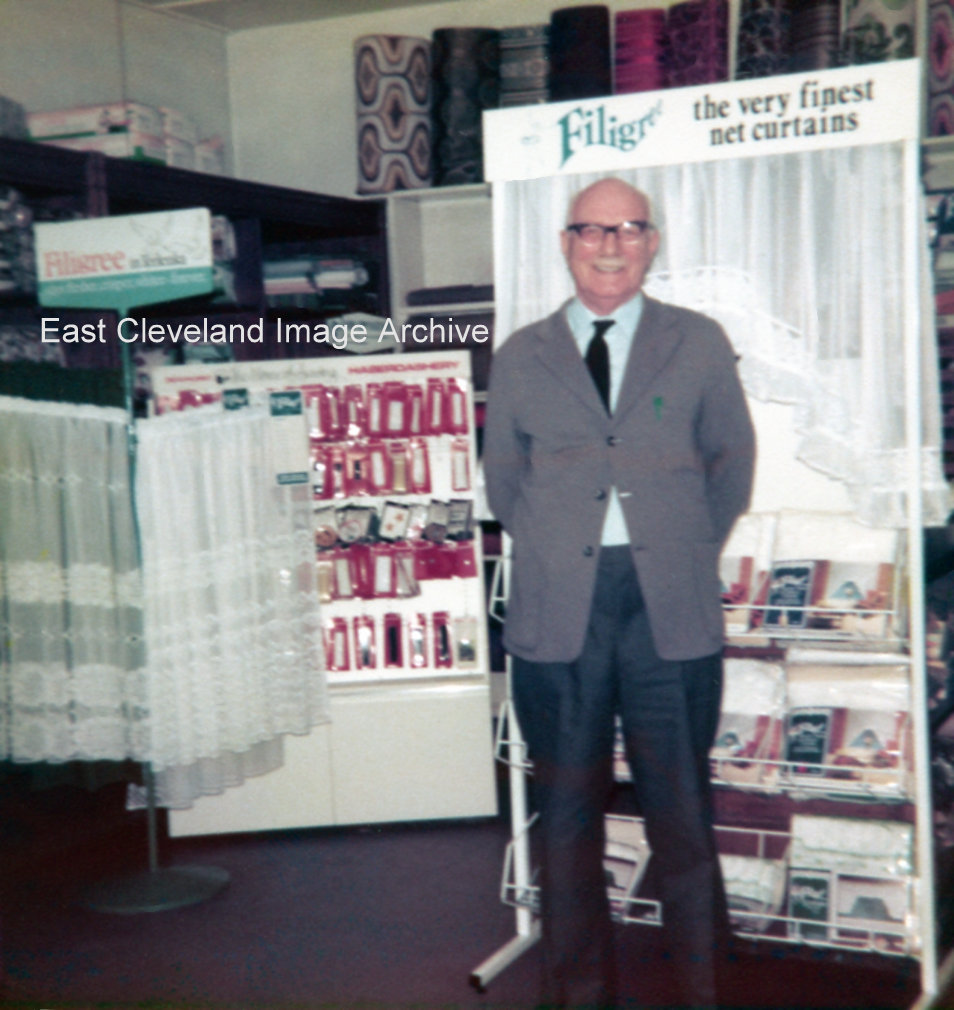
Mr. C.N. Dodd standing in front of the net curtain display in August, 1979, there are some colourful materials on the shelves behind.
Image courtesy of Mrs. Ditchburn.
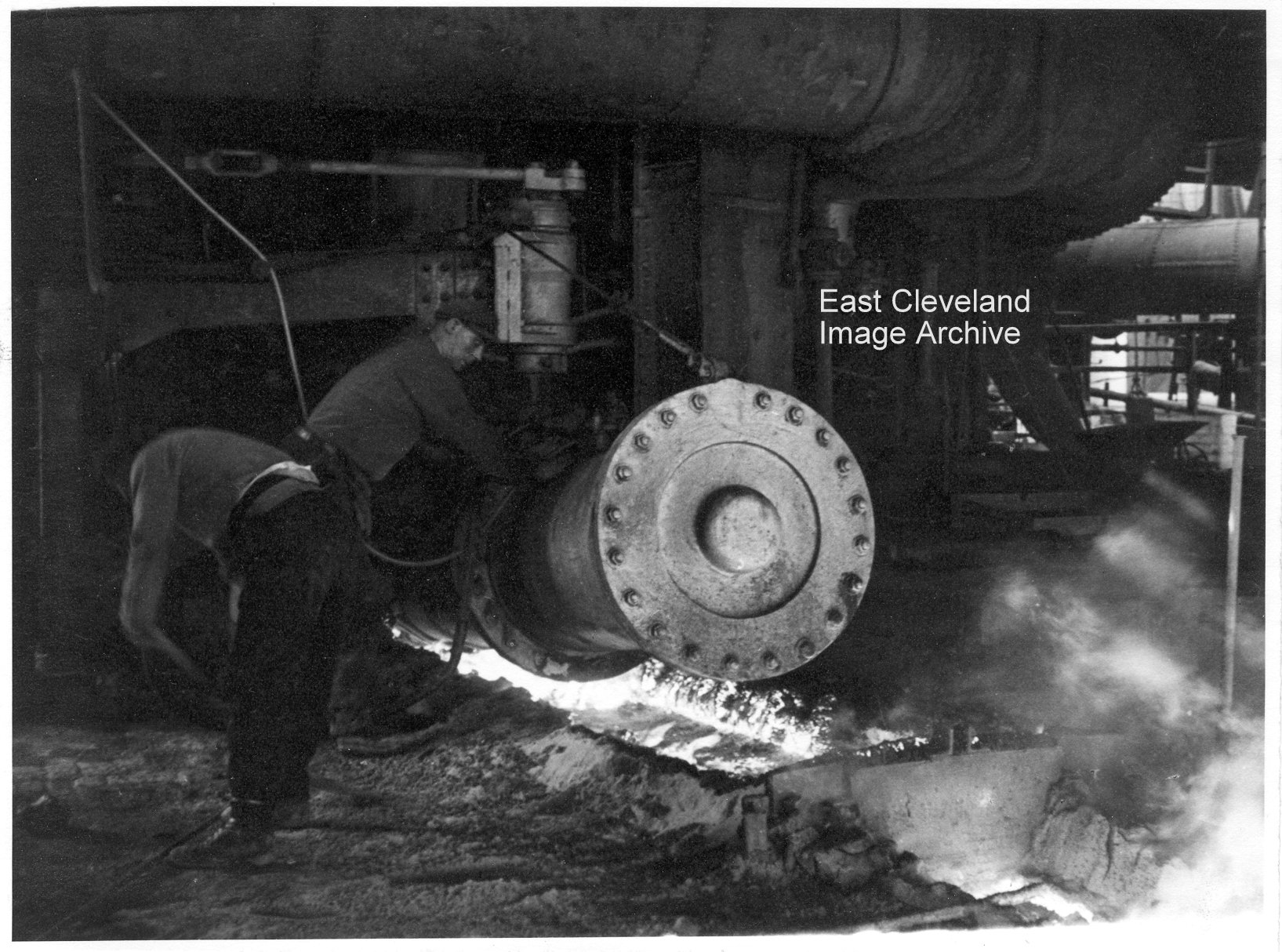
A very atmospheric shot of No. 5 blast furnace casting on Skinningrove; you can almost taste the sulphur! The ”gate” in the sand runner is to skim the slag off the iron and divert it towards the waiting slag ladles, the iron carries on straight ahead. The most dangerous time in the tapping process is when the liquid iron and slag are almost exhausted – because the system is under pressure the pressure seal can blow through the tap-hole sending slag and iron spraying in all directions, very pretty, but very dangerous!
The device which can be seen facing the camera is actually the “Clay gun”, a device for injecting clay into the taphole at the end of a cast, to stop the flow of iron. It looks like the Frontside lads are tidying up at the end of a cast. The large circular pipe above is the “Bustle main” which fed hot blast from the stoves into the furnace via the tuyeres which were spaced radially round the furnace. Latterly the Clay gun was powered by electricity, and it was the shift electricians duty to be there in case the gun failed to work, as things could get quite hairy if the gun failed to stop the taphole. The procedure was to start to bring the furnace “off blast” if the gun failed. In the meantime as a safety precaution the furnace would “Pull wind”.
Image courtesy of the Pem Holliday Collection.
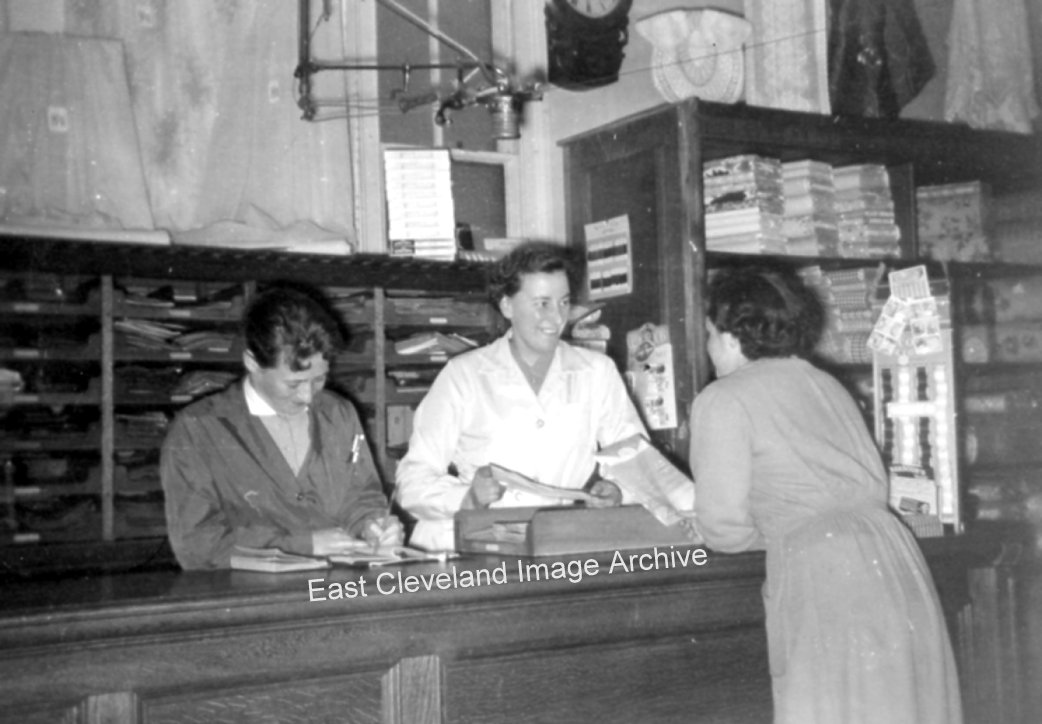
Betty Ditchburn and Mary Coverdale are behind the counter; whilst Betty Gorman is in front in this photograph. The cash tin can be seen above the shelves. Do you remember how your payment was put in the canister and it went round the wires to the kiosk? The money was taken out and your change put in the tin and then it was sent back to the counter.
Image and names courtesy of Mrs. Betty Gorman.
|
|










Recent Comments